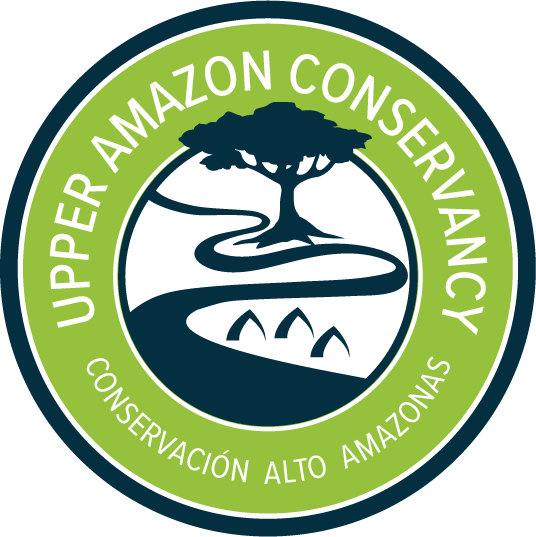Remote Communities Provided with Pandemic Support
July 24, 2020: UAC teamed up with the indigenous federation of the Inuya and Mapuya rivers, FIARIM, to provide remote communities with medicines, food and guidance on avoiding COVID-19. As the virus moves into the most remote parts of the Amazon, indigenous tribes that lack adequate health care, cleaning supplies and the ability to social distance are increasingly at risk.
FIARIM president, Edgar Monsin, arriving with COViD information posters and medical plus essential supplies.
The Inuya River is home to the Amahuaca, Yaminahua, and Ashaninka tribes, including people considered still in initial contact with the outside world. In the absence of any tangible support from the government despite the growing risks of COVID-19 to these remote tribes, FIARIM requested our help in facilitating a trip upstream from the jungle city of Atalaya to deliver food, medicines and instructions on avoiding the virus to their constituent communities.
FIARIM president, Edgar Monsin, and vice president, Gino Machay, spent a week traveling among six communities delivering food including rice, pasta, salt, and cooking oil as well as soap, alcohol, and other cleaning supplies. They were also given commonly needed medicines such as amoxicillin, ciprofloxacin, and ibuprofen. UAC and FIARIM coordinated with the regional health office, specifically with the advisor for indigenous tribes, on which medicines to bring as well as protocols for visiting communities during the pandemic. These included strict use of masks and protective suits, frequent hand washing, and using alcohol to kill germs.
In addition to the food, medicines and cleaning supplies, Edgar and Gino provided each community with banners displaying basic information on COVID-19, including symptoms, how it is spread, and strategies to avoid it. We partnered with linguists in Atalaya to translate the banners to Amahuaca and Ashaninka in order to ensure adequate understanding by all tribespeople.
They found three possible cases of COVID-19 during the trip, two of which were later confirmed in the hospital in Atalaya. Both cases were non-indigenous, mestizos living in the mixed-race community of Inmaculada. According to data released by the Atalaya health agency, as of July 20th there have been approximately 1,600 cases confirmed in the city of Atalaya, the large majority being mestizos. None of the 17 reported deaths have been indigenous people. Fortunately, there are still no known cases among the Inuya indigenous communities.
Edgar Monsin explaining how to use some of the medicine delivered by Upper Amazon.
However, the risk of exposure is increasing as workers at a nearby timber mill have been ignoring the quarantine and traveling upstream from Atalaya. Understandably, the Inuya tribes have grown increasingly fearful about being infected and begun preventing any travel through their lands. When Edgar and Gino arrived in the most remote community, home to people in initial contact, they were stopped by the villagers who actually fired a shotgun as a warning before eventually recognizing them (see a video of this tense encounter below).
The expedition also served to check on loggers working illegally on the upper Inuya, helping us keep track on their activities so we can further investigate as soon as we can return to the field. Last October, we documented widespread invasions on the Inuya and neighboring Sepahua rivers as reported in this article in Mongabay. Now the tribes have to worry not only about losing their forest, but about being infected with COVID-19 by the loggers.
We want to thank our generous partners at Global Greengrants Fund and The Rainforest Alliance for supporting this critical work. The Inuya is among a handful of watersheds where we are focusing our support for indigenous tribes threatened by the pandemic.



